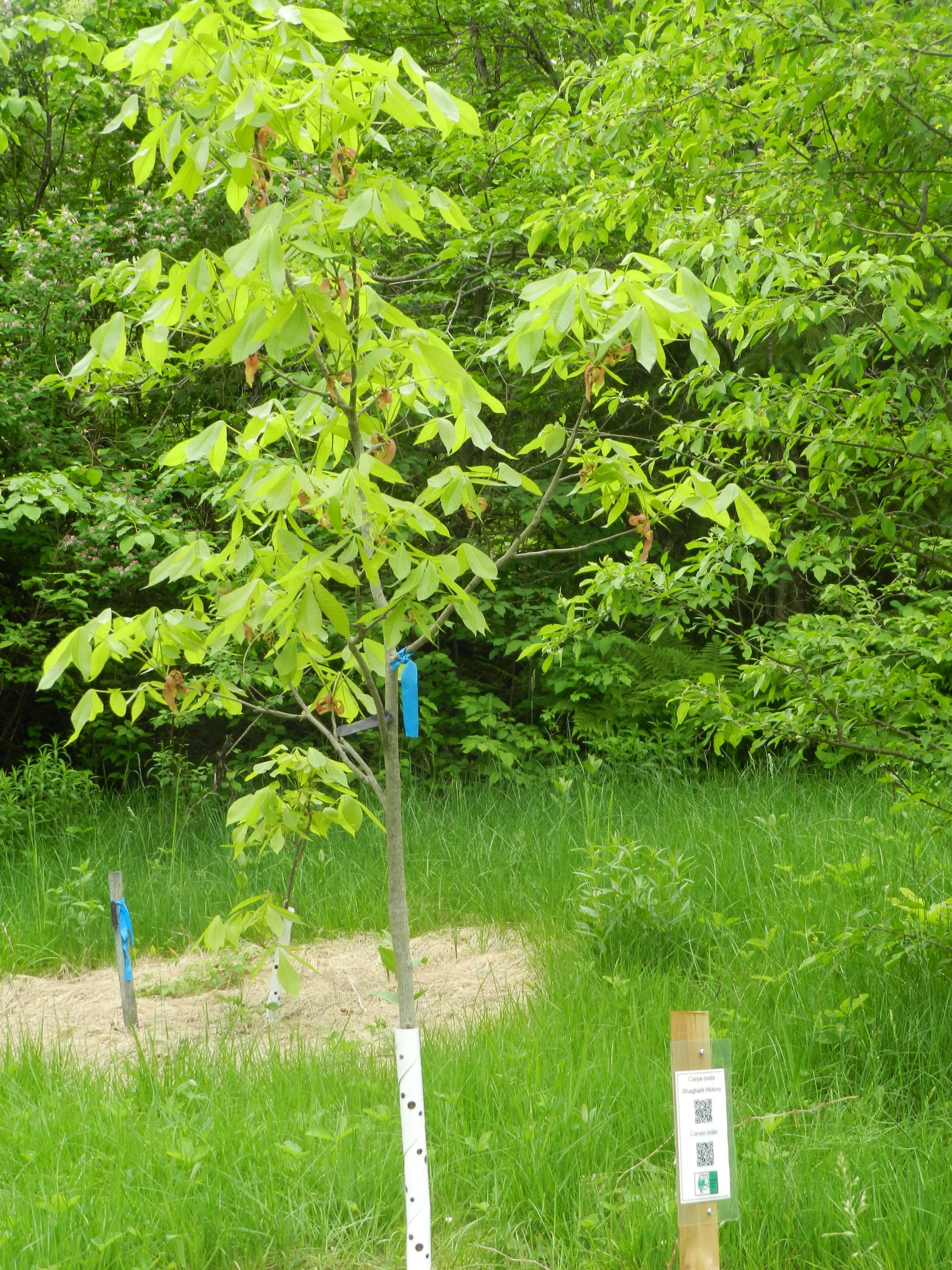The Friends of the Petawawa Research Forest have created an Arboretum at the PRF. Situated on the former Petawawa National Forestry Institute townsite off of Clouthier Road, it is an outdoor classroom for teaching tree identification. It will benefit students in schools, colleges, universities, and interested people of all ages.
We have been purchasing, collecting, propagating, growing, and planting trees, mostly species that were not already on site. We have been arranging them for handy comparisons, with identification labels that include QR Codes linking to species information on the internet. We started planting in the spring of 2013; after ten seasons we have planted 185 trees of 83 species. We intend to add more.
We want to showcase the trees native to Renfrew County and the Great Lakes-St. Lawrence Forest Region. But we will also have trees from other geographic regions: southern species, western North American conifers, and a few European and Asian species of interest to forestry.
Some southern trees, such as black walnut and hackberry (from the Deciduous Forest Region or Carolinian Forest in southern Ontario) have been planted successfully in our area, especially in towns and cities. Others, such as black oak and black gum, may not have been tried in our area yet. With tree species losses due to introduced insect pests and fungal diseases, and with climate change occurring, we may need to consider “assisted migration” to help restore biodiversity in our forests. We want to have a look at southern species, to see if there is potential for them to grow here. As this is a legitimate experiment for the Petawawa Research Forest, we are keeping records of the trees we plant for evaluation purposes.
We will not be focusing on horticultural plant materials such as commercial ornamental and fruit trees. As well, we will deliberately avoid some species because they can become invasive (i.e. Norway and Manitoba maples and Scots pine). However, many exotic species are already on site, either planted for forestry trials (i.e. Japanese and European Larch) or planted by former residents of the PNFI townsite (i.e. crab apples and lilacs). Note that many of our native forest trees can and should be considered for landscape use. Visitors will see examples of tree species they may want to plant on their own properties.
We hope people will come to the Petawawa Research Forest to appreciate and enjoy the trees around us.
The Friends of the Petawawa Research Forest want to thank the donors, volunteers, and PRF staff for all of their contributions towards this worthwhile project. It can only improve with age.
PRF Arboretum Tree Species Checklist 2023
___________________________________________________________________________________________________
Our list of planted tree species at the Arboretum. (Note that there are species on site that we didn’t need to plant):
PRF Arboretum timeline 2023
___________________________________________________________________________________________________
The Petawawa Research Forest Arboretum
Article by Robin Cunningham published in the Woodlander


Shagbark Hickory
American Sycamore






